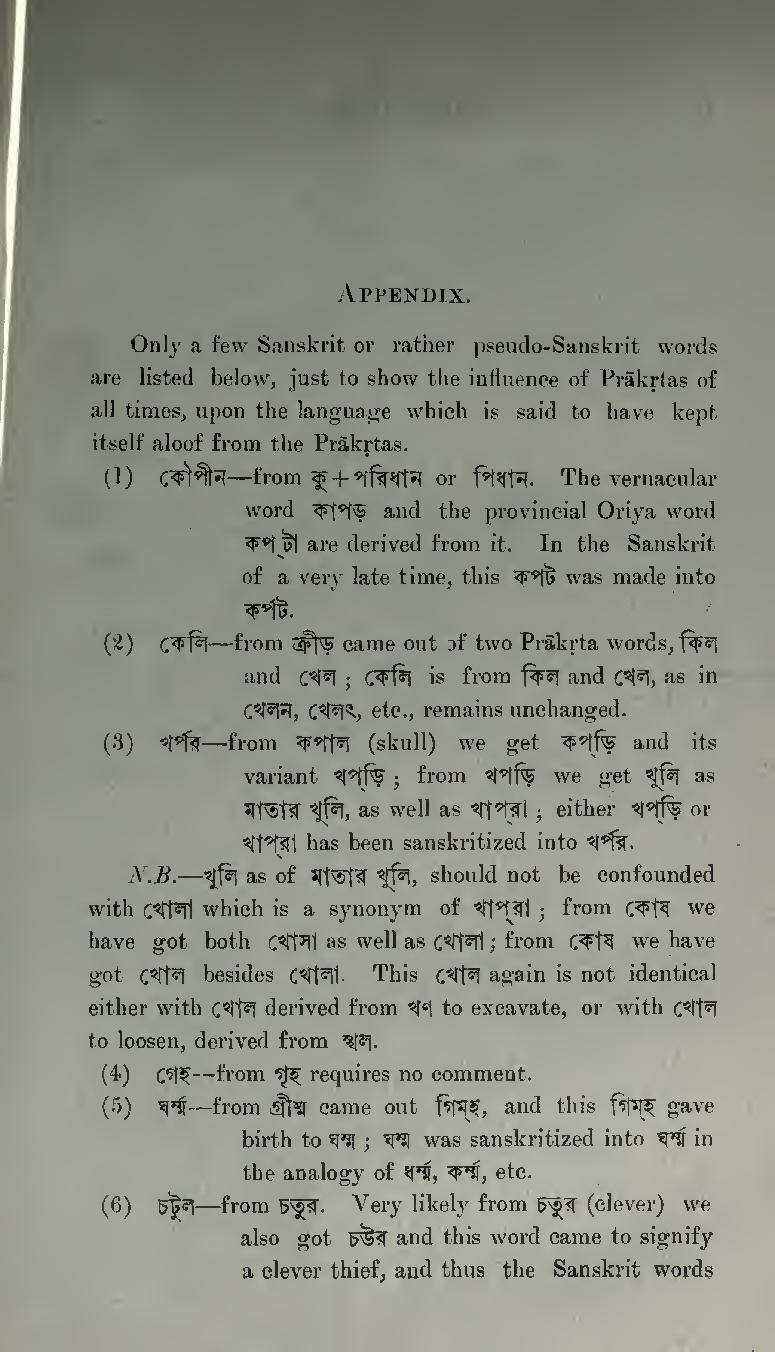Appendix.
Only a few Sanskrit or rather pseudo-Sanskrit words are listed below, just to show the influence of Prākṛtas of all times, upon the language which is said to have kept itself aloof from the Prākṛtas.
(1) কৌপীন—from কু + পরিধান or পিধান. The vernacular word কাপড় and the provincial Oriya word কপ্টা are derived from it. In the Sanskrit of a very late time, this কপট was made into কর্পট.
(2) কেলি—from ক্রীড় came out of two Prākṛta words, কিল and খেল; কেলি is from কিল and খেল, as in খেলন, খেলৎ, etc., remains unchanged.
(3) খর্পর—from কপাল (skull) we get কপ্ড়ি and its variant খপ্ড়ি; from খপড়ি we get খুলি as মাতার খুলি as well as খাপ্রা; either খপ্ড়ি or খাপ্রা has been sanskritized into খর্পর.
N.B.—খুলি as of মাতার খুলি should not be confounded with খোলা which is a synonym of খাপ্রা; from কোষ we have got both খোসা as well as খোলা; from কোষ we have got খোল besides খোলা. This খোল again is not identical either with খোল derived from খণ to excavate, or with খোল to loosen, derived from স্খল.
(4) গেহ—from গৃহ requires no comment.
(5) ঘর্ম্ম—from গ্রীষ্ম came out গিম্হ, and this গিম্হ gave
birth to ঘম্ম; ঘম্ম was sanskritized into ঘর্ম্ম in the analogy of ধর্ম্ম, কর্ম্ম, etc.
(6) চটুল—from চতুর. Very likely from চতুর (clever) we also got চউর and this word came to signify a clever thief, and thus the Sanskrit words
